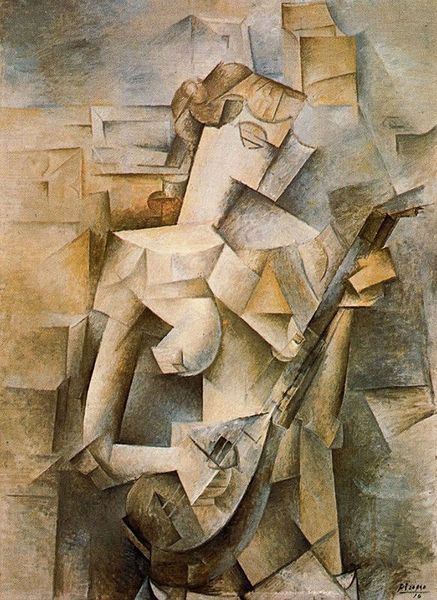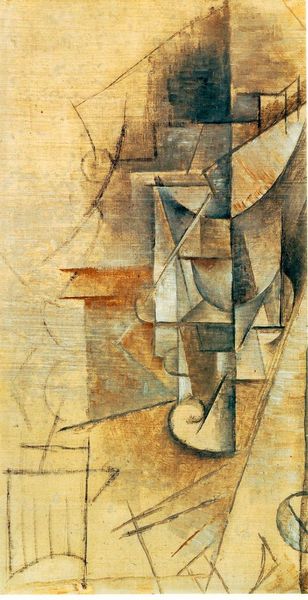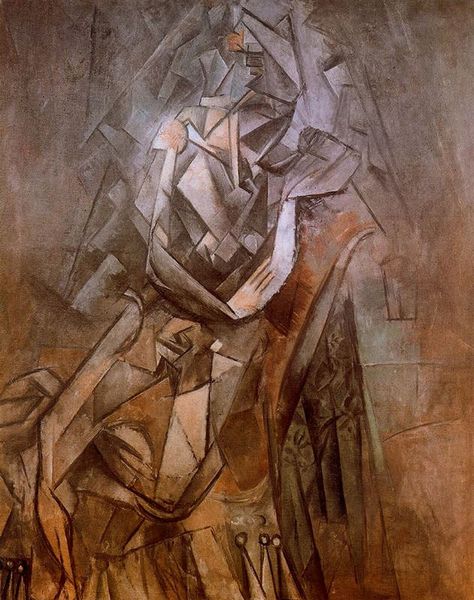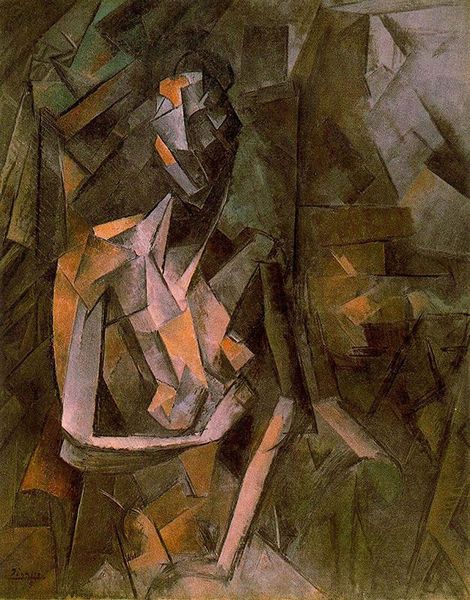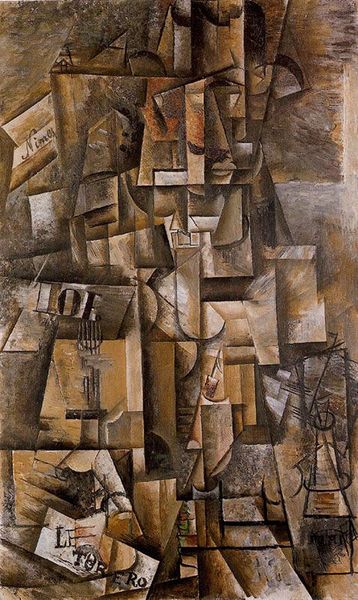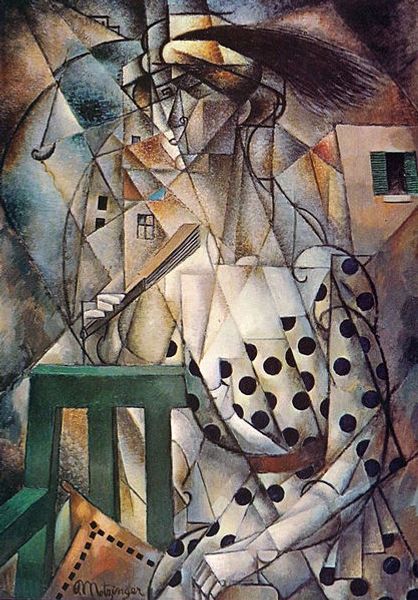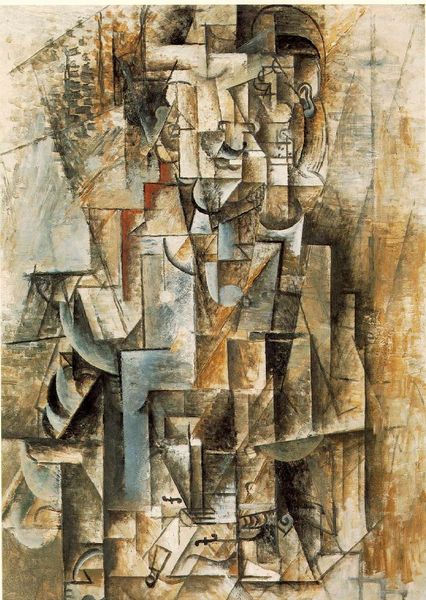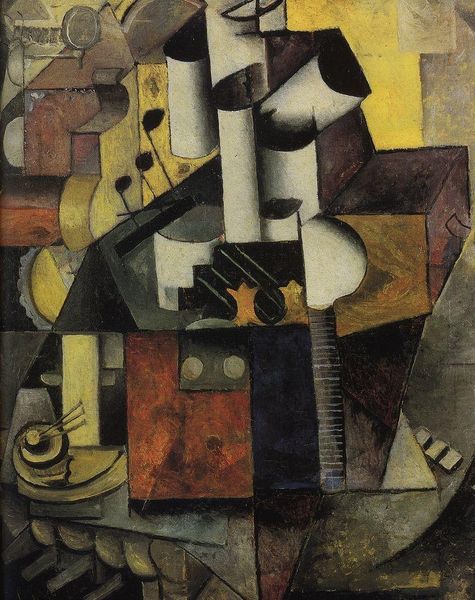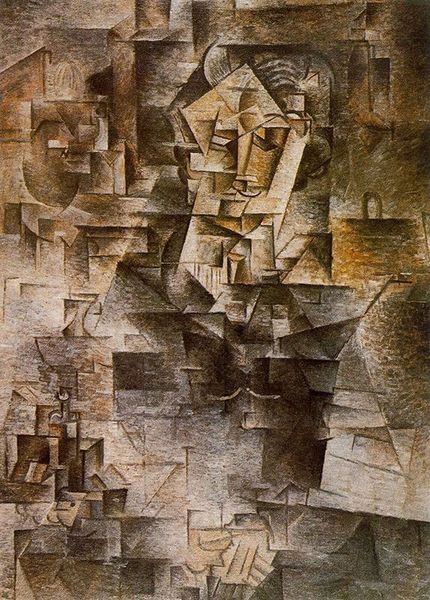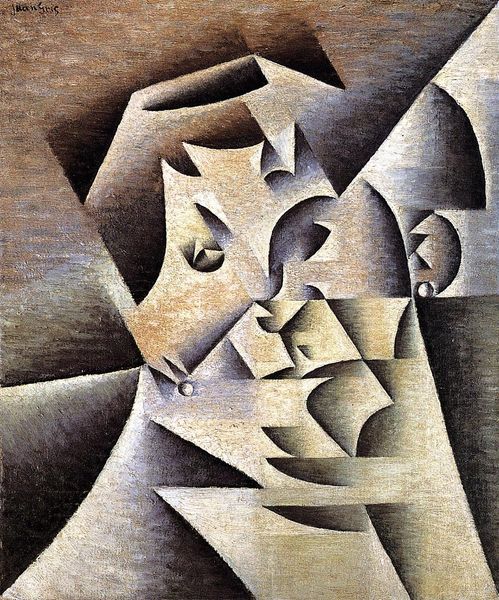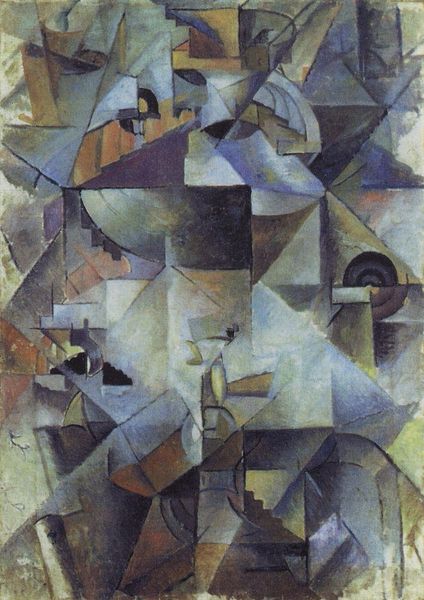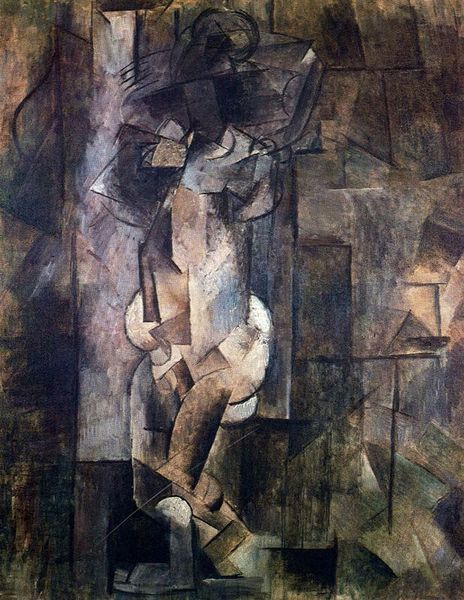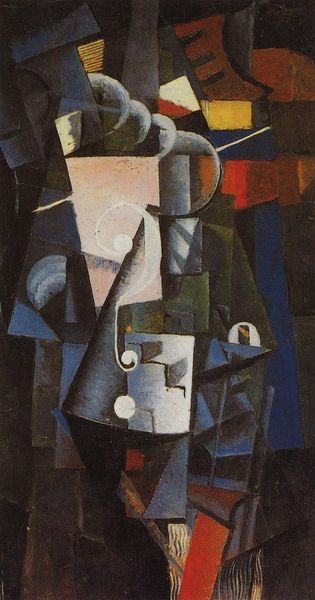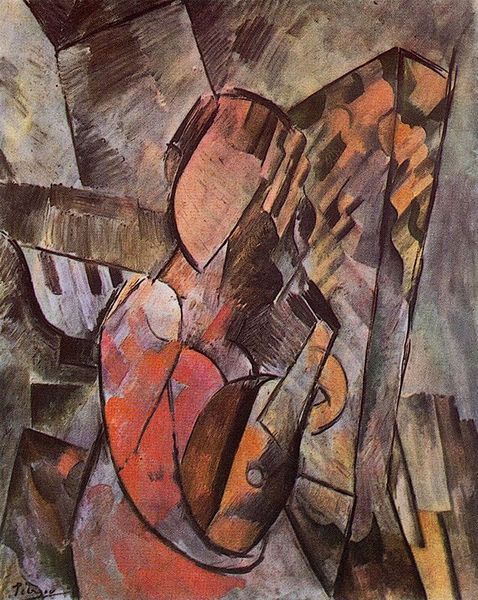
painting, oil-paint
#
cubism
#
painting
#
oil-paint
#
form
#
oil painting
#
geometric
#
cityscape
#
futurism
Copyright: Public domain US
Curator: Standing before us is Carlo Carra’s "Woman on the Balcony," an oil painting created in 1912. Editor: My initial reaction is one of fragmented perspective. It's almost dizzying. I see geometric shapes striving to represent… something? It’s like looking through a shattered lens. Curator: Absolutely, the piece exemplifies the influence of both Cubism and Futurism. Look at how Carra deconstructs the traditional image of a woman and her surroundings into interlocking planes and sharp angles. We can decipher buildings and hints of a figure. Editor: Yes, and the color palette - mostly muted greens and browns - creates a somewhat somber mood, wouldn’t you agree? Does that palette choice reflect the unease of pre-war Europe? Curator: It's plausible to read those tones as reflective of a world on the brink of transformation. But on a more symbolic level, notice how the balcony itself acts as a threshold. It's a place of observation, a liminal space between private and public worlds. This placement could indicate the changing role of women in society at that time. Editor: An interesting observation. Considering how Futurism embraced technology and speed, is this fracturing also about representing movement, the dynamism of modern life, or even the woman’s gaze darting around? Curator: Precisely! Futurism celebrated the energy of urban environments. This painting tries to capture that sensory overload through visual means, so it isn't about stillness, it's about perpetual motion, both in the cityscape and the modern mind. Editor: So, beyond the purely aesthetic qualities, we see this painting functioning as a potent commentary on the changing societal landscape and the individual's place within it. It is about the shattering and restructuring of perception itself, brought on by modernity. Curator: Exactly, Carlo Carra’s "Woman on the Balcony" captures this pivotal point in history and visualizes both a moment and a movement that changed our relationship with art and reality forever.
Comments
No comments
Be the first to comment and join the conversation on the ultimate creative platform.
